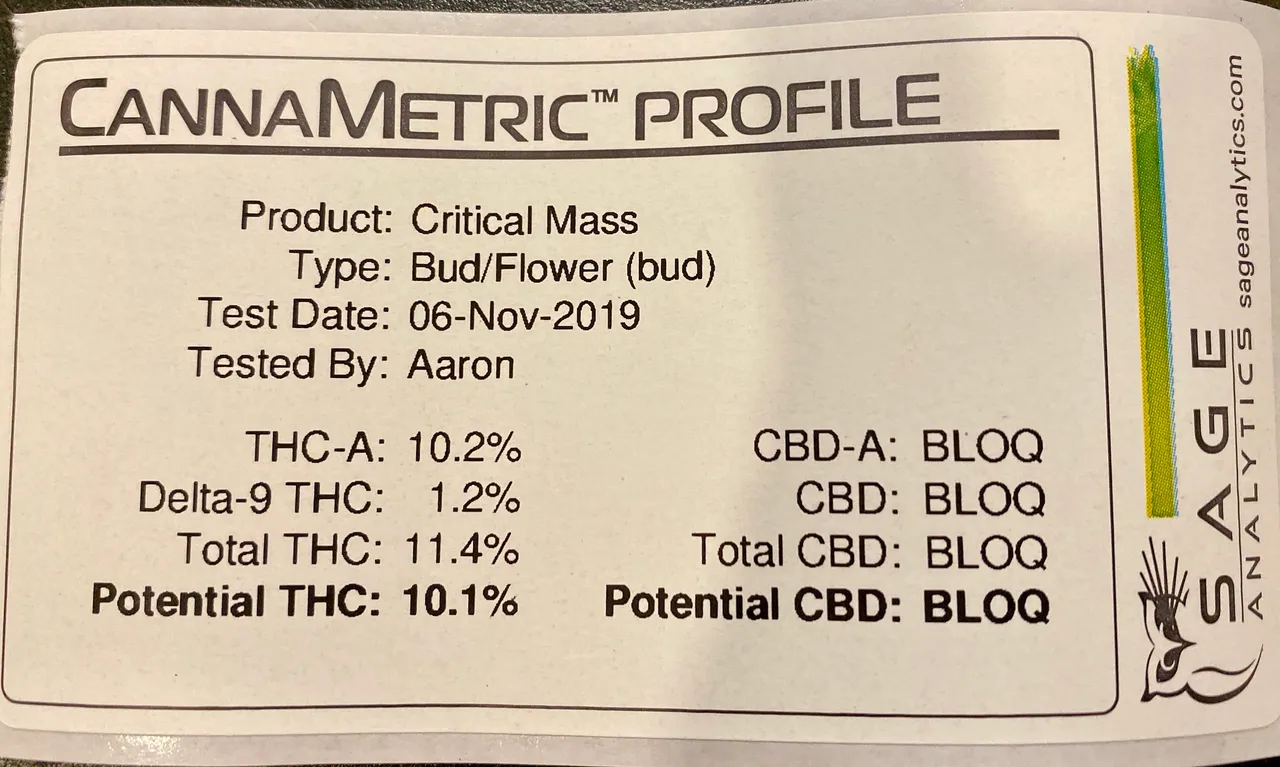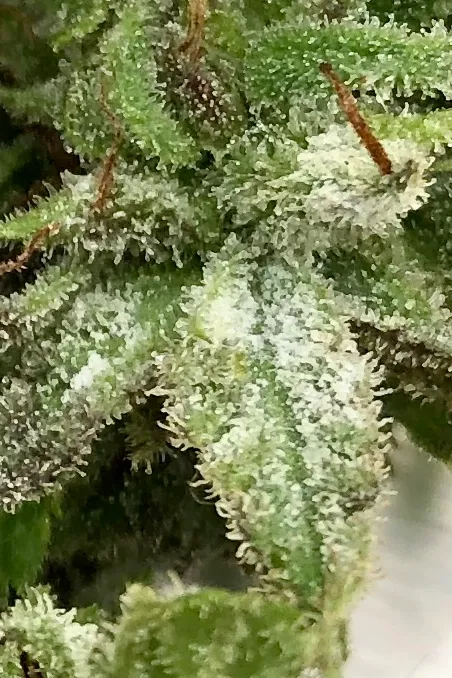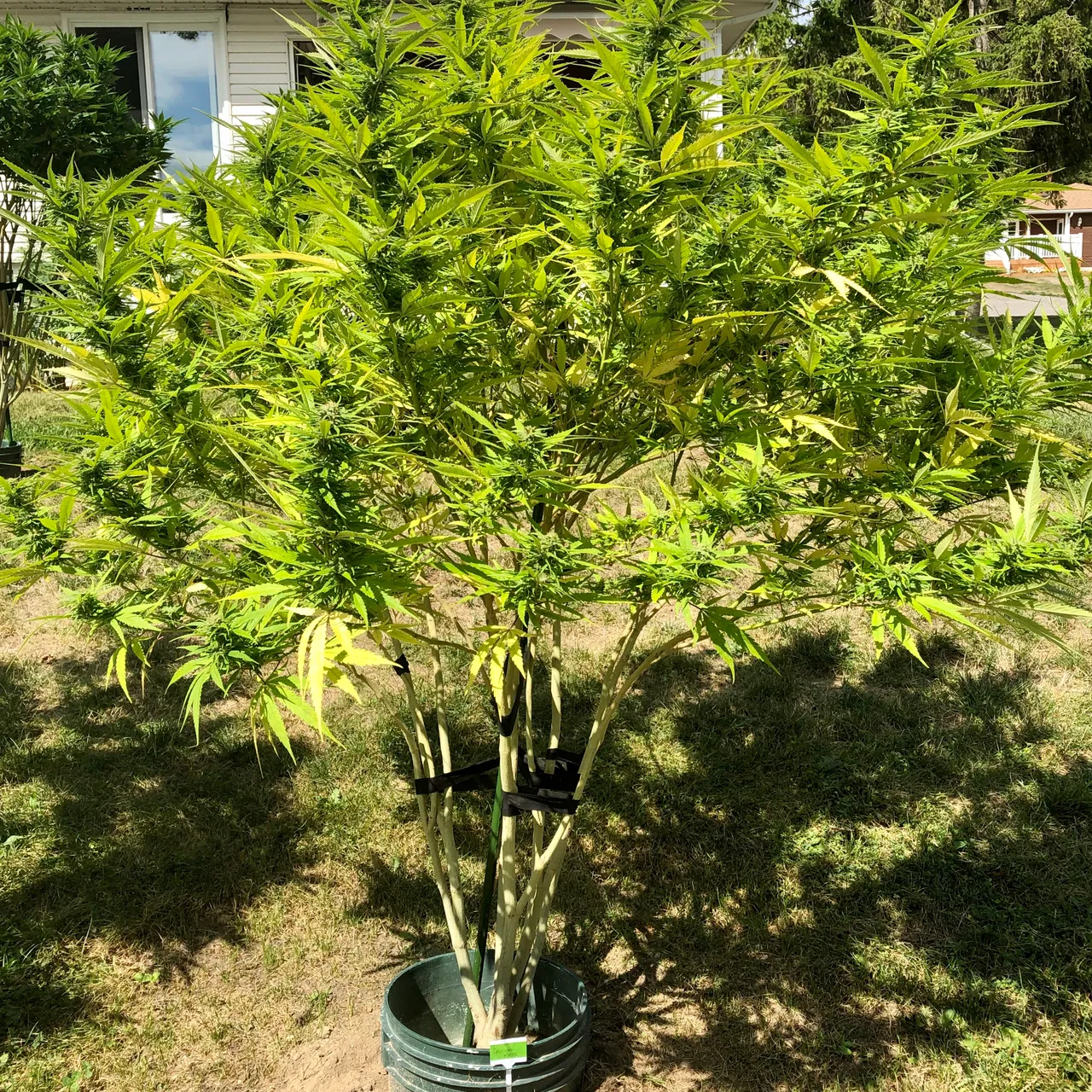
In Canada (strains of dried cannabis flower buds) are generally valued and priced according to the percentages of cannabinoids (reported to be) contained within them.
It is common to be faced with tiers or different levels of pricing based on grades of quality.
These grades are generally based on how much THC, CBD, or CBN (3 of the 111+ known cannabinoids) are potentially contained within the buds.
I like to think that the dried flowers are also valued and graded (for and by) their unique terpene profile (or what they smell like).
It’s the distinct aromas, along with the cannabinoids present that the plant contributes to the equation.
The number of physical cannabinoid receptors open, hormone levels and the genetics of the person are what set both the intensity and the actual emotions (themselves) that are felt once the flower is ingested.
As a result, no 2 bodies will respond exactly the same way to the same strain of a cannabis plant.
In the photo (above) you can see what a sample from one of my Critical Mass plants’ (dried flower buds) tested at.
In my humble opinion, it would be considered bottom grade (in this particular example) because it doesn’t contain a huge amount of THC, it has no detectable CBD and CBN wasn’t tested for.
If you don’t test or have access to reading test results (because they were never performed) you can (loosely) go by how the strain makes you feel, once ingested.
If you can’t ingested it, you have to go by how the dried flower buds look, smell and how sticky they feel.

If you can’t look, smell or feel the produce, then you pay the asking price, roll the dice and hope that the produce you’ve bought has some potency strength, isn’t covered in powdery mildew and you like its aroma.
(In the photo (above) you can see what lots of resin loaded trichomes look like in the presence of patches of powdery mildew. Not good.)
In my garden, with my gardening skills, conditions and novice cannabis growing experience, I pulled 10% THC out of this strain.

Another grower, might be able to produce 18% from this same strain.
It’s important to remember that if a strain contains ANY THC (even 2%) it has the potential to produce a psycho-active (high) if enough of it is ingested.
When the percentage of THC is less than 10%, a person (potentially) will just need to use more buds (more frequently) than they would, if they used a strain containing 18% (for example).
For a budding cannabis canna-sseuir, a strain at 10% might just be their ideal level of medication because it’s easier to learn to dose.
If I relate this back to learning to use alcohol, it’s not such a big deal if you over-pour a glass of wine by a few ounces, but it can be disastrous if you over-pour hard liquor by the same amount...especially if the person never drinks and has genetics (Indigenous) that influence the metabolism rate of their liver.
Supply and Demand Is Also A Factor
Critical Mass (at 10% THC) has the capability to make it to a mid-grade pricing tier if there is more demand for that percentage of THC than there is produce that contains it.
Over the years I‘Ve purchased dried flower bud at $5 a gram, $20 a gram and everything in between.
I considered this investment to be the cost of my education while I learned the differences and how not to be taken for a ride when buying dried cannabis.
I’ve been balanced at every gram price point and at every concentration level, from hash to distillate to terpene juice.
Then I grew.
Lolz! (My growing hand was forced, once I knew the differences.)
The contrast is what inspires change and what gets measured, gives direction to the actions that can be taken.
~ Rebecca ;)